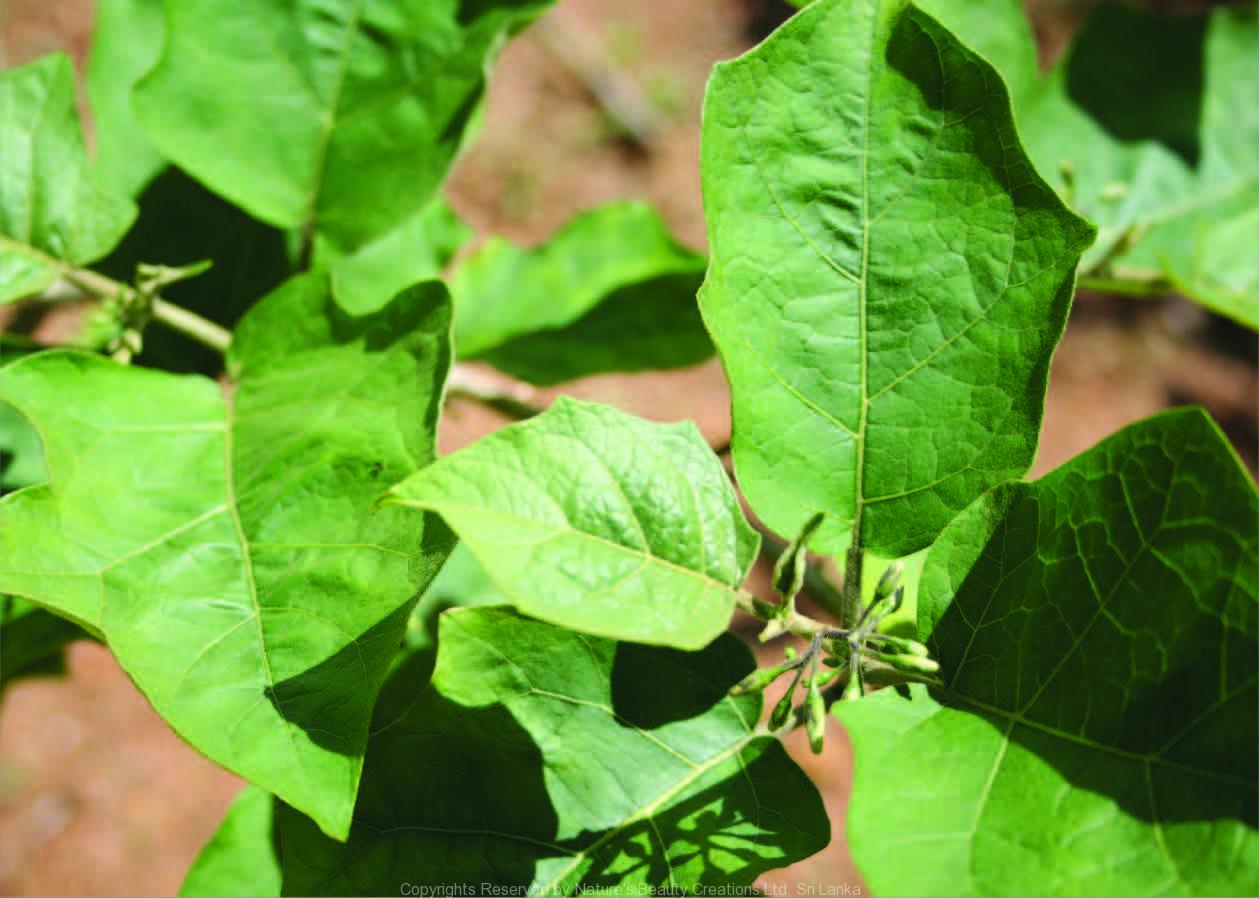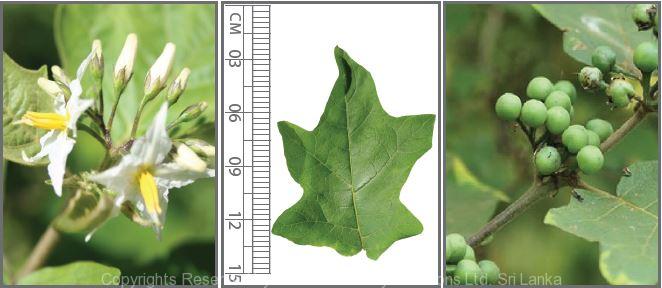

Traditional Knowledge
Useful plant parts :
Fruit
Uses in traditional medicine :
- Young fruits are eaten as a vegetable mixed with jack seeds and coconut scrapes to treat enlarged spleen
- Possess sedative, diuretic and digestive properties
- Used to treat cough
Scientific Research
Chemical constituents:
Steroidal saponins: solanolactosides A and B, torvonin A and spirostanol glycosides: torvosides M and N, neochlorogenin and solagenin glycosides and flavonoids: isoquercetin, kaempferol, quercetin from aerial parts; methyl caffeate was isolated from fruits
Bioactivity :
Leaf extract: antimicrobial; torvosides M and N: cytotoxic against cancer cells; methyl caffeate: antihyperglycaemic and antidiabetic; aqueous extract of mature fruits: potentiate arterial hypertension and cardiac hypertrophy; methanol extract of fruits: antimicrobial; phenolic compounds from fruits: antidiabetic, antioxidative; aqueous and methanol extracts of leaves: antiulcer
Clinical:
Note :
Young fruits are used as a vegetable
References : Chah, K. F. et al., (2000), Antimicrobial activity of methanolic extract of Solanum torvum fruit, Fitoterapia, 71, 187-189. Gandhi, G. R. et al., (2011), Antihyperglycemic activity and antidiabetic effect of methyl caffeate isolated from Solanum torvum Swartz. fruit in streptozotocin induced diabetic rats, European Journal of Pharmacology, 670, 623–631. Lu, Y. et al., (2009), Four new steroidal glycosides from Solanum torvum and their cytotoxic activities, steroids, 7, 4, 95–101. Mahmood, U. et al., (1985), Torvonin-A, a spirostane saponin from Solanum torvum leaves, Phytochemistry, 24(10), 2456-2457. Nguelefack, T. B. et al., (2009), Hypertensive effects of oral administra- tion of the aqueous extract of Solanum torvum fruits in l-NAME treated rats: Evidence from in vivo and in vitro studies, Journal of Ethnopharma- cology, 124, 592–599. Nguelefack, T. B. et al., (2008,) Anti-ulcerogenic properties of the aqueous and methanol extracts from the leaves of Solanum torvum Swartz (Solanaceae) in rats, Journal of Ethnopharmacology, 119, 135–140. Valsaraj, R. et al., (1997), Antimicrobial screening of selected medicinal plants from India, Journal of Ethnophrmacology, 58, 75-83. Wongsa, P, et al., (2012), In vitro screening of phenolic compounds, potential inhibition against a-amylase and a-glucosidase of culinary herbs in Thailand, Food Chemistry, 131, 964–971. Lu, Y. et al., (2011) Chemical Constituents from Solanum torvum, Chinese Journal of Natural Medicines, 9(1), 0030−0032.
Copyrights Reserved By
Natures Beauty Creations




